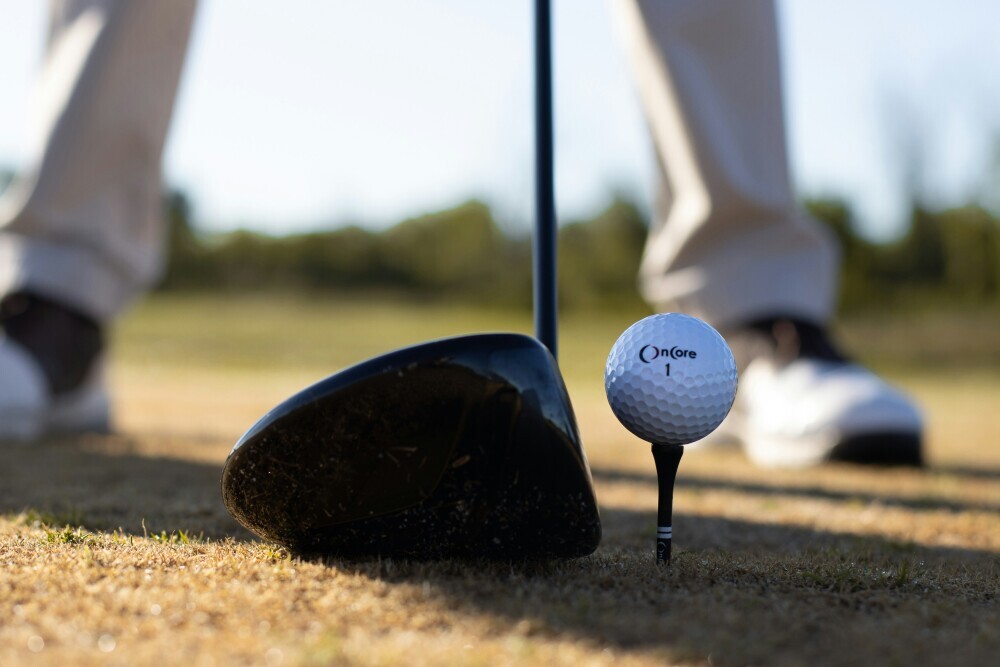How To Increase Driving Distance Without Losing Accuracy


Fore! Quick note: a few links here are affiliate links. If you snag gear through them, I earn a small commission — no extra strokes added to your game.
I know you have all been wondering… how can I increase distance on my drives without sacrificing accuracy? Not only do I know that, but I’ve also got the answer right here for you. So step into the golf vikings’ classroom, because I’m about to spill it all right now.
A proper grip and stance are where it all starts if you want that extra distance off the tee. Your grip should feel comfortable and natural, not tense or over-managed. Think of it like a firm handshake rather than a hard grip on a baseball bat. A relaxed hold enables better control and smoother swings. Firm but relaxed will serve you well during your swing.
Posture plays a major role in driving efficiency. Standing too straight can limit your range of motion, while being too bent over might throw you off balance. Aim for a posture that’s athletic—knees slightly bent, spine tilted from the hips, and your weight balanced on the balls of your feet. This supports a wider arc, crucial for adding power. Without proper posture, you could wind up shortchanging yourself on your drives.
A balanced setup is about more than just getting comfy. You need to line everything up—feet, hips, and shoulders pointing at your target. This alignment helps maintain a straight path as your club travels, reducing unwanted sidespin and ensuring your ball goes longer and straighter. A strong foundation means you’re not swinging wild but with control and precision. So now that you have the perfect grip and posture for a beautiful drive, let’s get into the swing.
To hit the ball farther while staying accurate, proper swing mechanics are key. Our guide on Mastering the Golf Swing breaks down techniques that help maximize distance safely.

The Dynamics of Swing Mechanics
Swing mechanics can feel like a dance move that needs some fine-tuning. Each part of the swing—backswing, downswing, and follow-through—has a role in boosting your drive. The backswing is like winding up a spring, where you store energy by getting a full shoulder turn and shifting your weight onto your back foot. This loading action sets you up for a powerful downswing. Think of yourself as one big rubber band.
The downswing is where acceleration takes the spotlight. It’s not about swinging your arms fast but letting your lower body lead—like starting with your hips and letting the rest of your body flow. This sequence of movements unleashes the stored energy from your backswing, giving the ball some serious speed when your clubface meets it. This is the ‘release’ of the rubber band. So the backswing is building up all the tension with your body motion, and the downswing is letting it all go.
A smooth follow-through isn’t just for looking cool—it’s a sign you used your body efficiently and maintained balance throughout the swing. Imagine your club slicing through butter smoothly; that imagery helps in maintaining fluidity and reduces tension in your forearms, which can help keep your accuracy intact. Don’t underestimate a solid follow-through on your swing.
Going for power requires understanding the difference between acceleration and simple speed. It’s easy to just muscle through, but real distance comes from gradually accelerating your swing with control. Too often, folks get caught up with trying to hit hard, but over-swinging can cause a lot of mishits and loss of accuracy. It’s not about swinging as fast as you can, but rather the proper mechanics will be building the momentum to get the most powerful swing possible.
Addressing common mistakes like gripping too tightly, over-swinging, or poor weight transfer is essential. Each of these can throw off your mechanics and result in shorter, inconsistent driving. Awareness and a little patience go a long way to refine each part of your swing for better distance and accuracy. So how can we hit the ball farther without sacrificing accuracy?
Increasing clubhead speed requires both strength and flexibility. Check out Golf Fitness for Power, Flexibility, and Consistency for exercises that boost distance without sacrificing control.

Strategies for Boosting Distance Without Compromising Accuracy
Adding distance to your drive without losing accuracy is about making smart choices, starting with club fitting. Getting the right fit ensures you’re swinging a club that compliments your natural game, not fighting against it. Pay attention to the loft angles too. Adjusting these can help launch the ball higher or lower, which affects distance and control.
Ball choice might seem minor, but it’s a game changer. Different balls have different spin rates, and selecting one that matches your swing speed can optimize your distance. A lower spin ball can help keep your flight straighter if you tend to slice or hook. So make sure you’re doing yourself a favor by playing with the right equipment.
The rhythm and timing of your swing are secret weapons in the quest for distance and accuracy. Find a tempo that feels natural and repeatable. Going too fast disrupts your timing and leads to mishits, so stay smooth and controlled throughout. Timing throughout is crucial for a perfect golf swing.
Incorporate a bit of improvisation on the practice ground by experimenting with different stances and takeaway speeds while practicing your drives. It’s about finding what works best for you and sticking with it. Trial and error will help you figure out what is going to get you the best result on the course.
These strategies create a solid bedrock for increasing distance while keeping your ball on target. With the right equipment and rhythm, you’re in a great spot to maximize what you’ve got without sacrificing accuracy. Let’s cover some drills to help you boost your training.
A balanced stance and weight transfer are crucial for long, accurate drives. Our Short Game Mastery guide also includes drills that improve overall swing stability and precision.

Effective Drills to Increase Driving Distance
Practicing with specific drills can turbocharge your driving skills. One of the simplest is working with tee height and ball positioning to get the most out of your swing. Setting the ball a bit higher on the tee encourages a sweeping strike, helping you achieve that coveted upward angle of attack for longer drives. You can play with this to see what works best for you.
Alignment sticks are your best friends when you’re looking to sharpen accuracy. Lay them down parallel to your target line and practice your stance. It’s an easy way to check and correct your body’s alignment, ensuring everything is aimed straight at the target. Proper alignment is necessary to get the best out of your drives.
Incorporating weighted clubs into your practice routine can boost your swing speed over time. These clubs work like a resistance workout for your swinging muscles. Often used in short bursts, they help build the fast-twitch muscles needed to generate more power without losing control. These will help you get used to a heavier club so that a normal club will feel lighter.
Don’t overlook footwork drills; they develop the lower body action crucial for power generation. Try the step through drill, where you take a mini step forward post-impact. This encourages better balance and ensures your weight is transitioning effectively during the swing.
Hitting balls with a towel or headcover under your arms can enhance your connection and tempo. Keeping these objects in place as you swing presses you to maintain a synchronized upper body, which translates to more consistent, powerful driving. Okay so we’ve gone over the swing techniques you will need to get the most out of your drive, now let’s finish up with another aspect that you may not have considered: the mental aspect.
Choosing the right driver can dramatically improve both distance and accuracy. Learn more in The Most Forgiving Drivers to find clubs that optimize your performance.

Mental Techniques to Improve Driving Performance
Your mental game can be as important as your physical skills when it comes to driving the ball further with accuracy. Developing a consistent pre-shot routine helps you focus and reduce stress. This could be as simple as deep breathing, a practice swing, or visualizing your intended shot path. These small routines aid in establishing a calm and collected mindset before each drive.
Visualization isn’t just some wishful thinking—it’s about seeing your success before it happens. Picture the ball soaring down the fairway as you line up your shot. This mental strategy can boost confidence and focus, helping you commit fully to each swing.
Handling pressure and nerves, especially in competitive settings, separates good golfers from the greats. It’s normal to feel jittery, but turning that into positive energy can improve performance. Use positive self-talk and relaxation techniques when the stakes are high to avoid tense swings, which often lead to a loss of accuracy.
Practicing mindfulness can help maintain a steady mindset. Being present and focused on each shot keeps negative distractions at bay, allowing you to execute your swings with clarity and precision. This can help keep you even keeled through the roller coaster of a round of golf.
With these mental techniques, you’re not just setting yourself up for improved driving but a more enjoyable game altogether. The right mindset can enhance performance and enjoyment, making your time on the course more fulfilling. So now you know how to drive the ball further using the best swing mechanics, and how to drive consistently will using mental focus. So get out there and work on getting the most distance on your drives. I’ll see you out on the golf course, driving like a champion.


